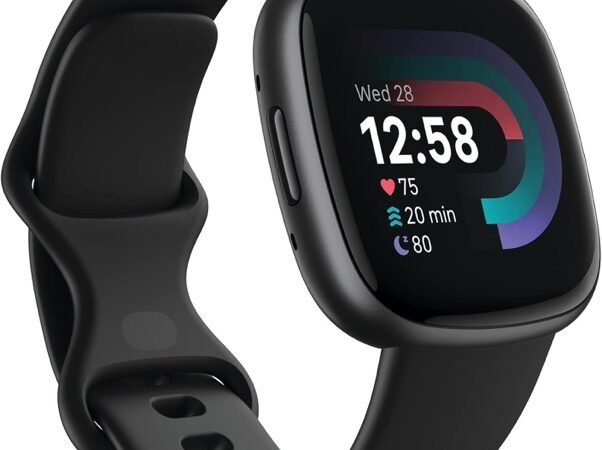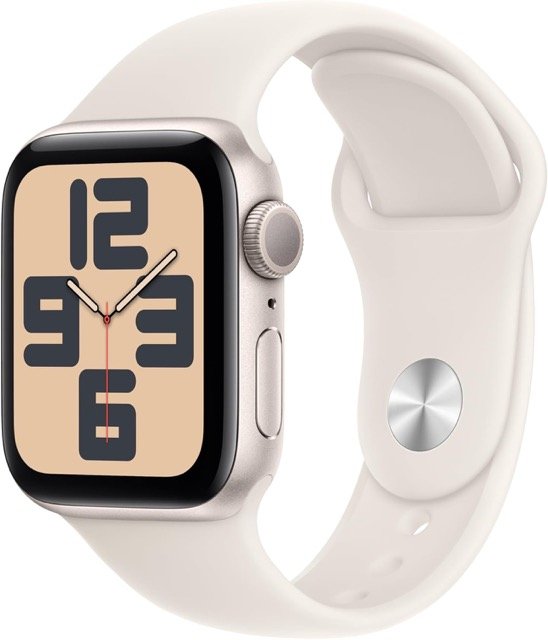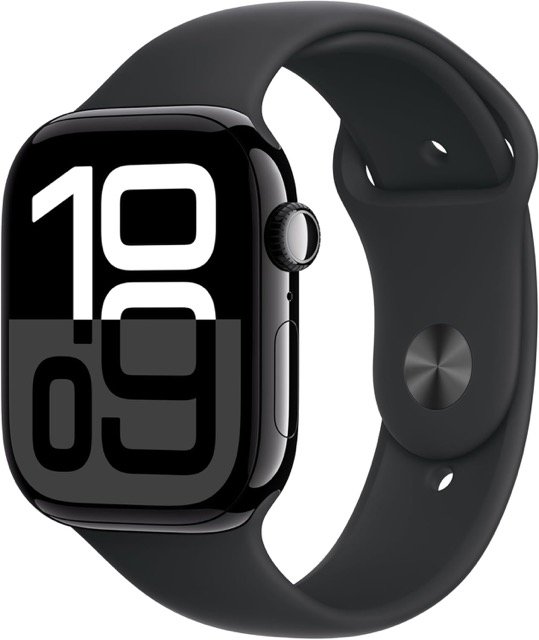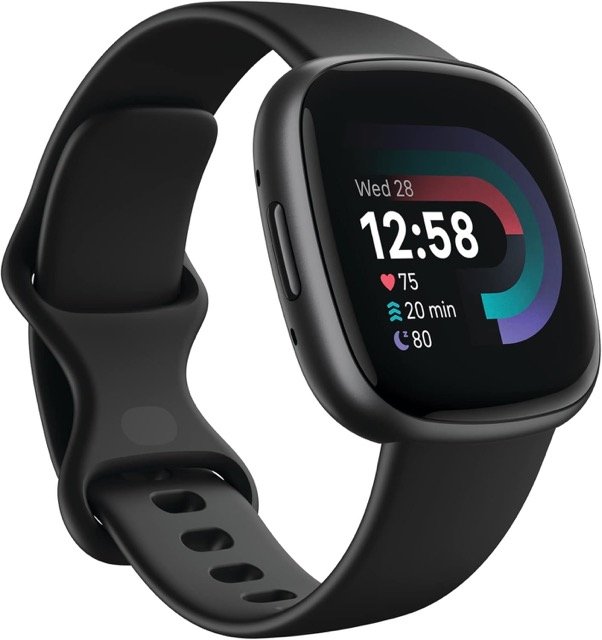Your cart is currently empty!
Fitness tracking refers to the systematic monitoring of physical activities and health indicators, enabling individuals to manage and improve their overall wellness.
As health consciousness continues to rise, fitness tracking has become an integral part of many people’s lives, providing them with insights into their exercise routines and lifestyle choices.
The evolution of technology has led to the development of advanced tools, among which smartwatches for fitness stand out for their versatility and convenience.
These wearable devices not only track various metrics such as steps taken, calories burned, and distance traveled but also offer more advanced functionalities like heart rate monitoring, sleep analysis, and personalized fitness plans.
The integration of technology into everyday fitness routines empowers users to make informed decisions about their health and enhances accountability.
Individuals seeking to adopt a healthier lifestyle benefit greatly from having accessible data related to their activities and body functions, allowing them to set achievable fitness goals and track their progress over time.
Smartwatches equipped with fitness tracking features are particularly effective in facilitating this process. They provide real-time monitoring and feedback, which can motivate users to reach their goals by making informed choices about their physical activities.
Whether it’s a person aiming to lose weight or an athlete training for a specific event, these devices serve as essential companions in their fitness journeys. Moreover, the ability to integrate with mobile applications further enhances the experience by allowing users to analyze trends in their fitness tracking data.
Overall, the significance of fitness tracking lies in its ability to provide a clear picture of one’s health and wellness, especially when paired with a smartwatch for fitness. As technology continues to evolve, the impact of fitness tracking on health routines is expected to grow, making it an essential aspect of modern living.
Key Features to Look for in Fitness Smartwatches
When selecting a smartwatch for fitness tracking, potential buyers should consider several essential features that enhance their fitness experience. One of the foremost attributes is heart rate monitoring.
A smartwatch equipped with reliable heart rate sensors can provide continuous heart rate data, allowing users to better understand their physical exertion during workouts and manage their overall heart health. Accurate heart rate tracking is vital for tailoring workouts and achieving fitness goals effectively.
Another significant feature to look for is GPS functionality. A smartwatch with integrated GPS allows individuals to track their outdoor activities without requiring a smartphone.
This capability is particularly beneficial for runners and cyclists who want to monitor their pace and distance accurately. Reliable GPS functionality enhances the tracking of various exercises, contributing to more effective fitness assessments.
Water resistance is also a critical consideration, especially for those who enjoy swimming or exercising in inclement weather. A smartwatch designed with adequate water resistance ensures durability during aquatic activities and protects the device from moisture damage in various environments.
Alongside this, battery life cannot be overlooked; a longer-lasting battery is vital for uninterrupted fitness tracking, particularly during extended workouts or multi-day adventures.
Compatibility with fitness apps is another important feature of modern fitness smartwatches. Users should ensure that their chosen device integrates seamlessly with popular fitness applications, providing them with access to training plans, health insights, and community support.
Finally, customization options, including interchangeable bands and personalized watch faces, allow individuals to express their style while enjoying the functionality of a smartwatch tailored to their fitness routines. These features collectively contribute to a smarter and more personalized fitness tracking experience.
Top Smartwatch Models for Fitness Tracking
As the demand for effective fitness tracking continues to rise, several smartwatch models have emerged as front-runners in this category. Each smartwatch varies in features, pricing, and performance, catering to different user needs.
This analysis provides an overview of the top smartwatch models currently available in the market, focusing primarily on their capabilities in fitness tracking.
The Apple Watch Series 8 remains one of the leading choices for fitness enthusiasts. It boasts advanced health monitoring features such as heart rate tracking, ECG, and an integrated GPS for accurate distance measurement during outdoor activities.
With an array of fitness apps and an intuitive user interface, this smartwatch for fitness is highly regarded for its seamless integration with iOS devices. However, its premium pricing may deter some potential buyers.
Next, the Garmin Forerunner 245 offers a more budget-friendly alternative while delivering exceptional fitness tracking capabilities. Ideal for runners, the Forerunner 245 includes built-in GPS, sleep tracking, and customized training plans.
User reviews highlight its long battery life and robust activity tracking features, making it a commendable option for fitness-focused individuals seeking reliable performance.
Another noteworthy contender is the Fitbit Sense 2, which stands out for its comprehensive health metrics, including stress management tools and skin temperature monitoring.
This smartwatch for fitness emphasizes holistic wellness, offering insights into the user’s overall health while delivering essential fitness tracking features. In terms of pricing, it remains competitive, appealing to those wanting a balance of functionality and affordability.
Lastly, the Samsung Galaxy Watch 5 is celebrated for its stylish design and versatile fitness tracking features. It incorporates advanced heart health metrics, robust data analytics, and compatibility with both Android and iOS devices, catering to a diverse user base. Feedback from users highlights its reliability in fitness tracking while providing a user-friendly experience.
In conclusion, the market offers a variety of smartwatches that excel in fitness tracking. Each model showcases distinct features and pricing structures, ensuring a suitable choice for everyone from casual fitness enthusiasts to serious athletes. When selecting a smartwatch for fitness, it is essential to consider individual preferences and specific tracking needs.
Comparative Analysis of Heart Rate Monitoring Accuracy
Heart rate monitoring accuracy is a crucial metric when evaluating the performance of smart devices, particularly smartwatches designed for fitness tracking.
As the popularity of these wearable devices continues to rise, understanding the technologies that underpin heart rate measurements becomes increasingly significant for potential users.
Various methodologies, including optical sensors, electrocardiogram (ECG) capabilities, and advanced algorithms, contribute to the differences observed in heart rate reading accuracy among different smartwatch models.
Optical heart rate sensors, commonly found in fitness-focused smartwatches, utilize light to measure blood flow through the skin. While these sensors are generally adequate for most users and everyday exercise, they can be sensitive to factors such as skin tone, movement intensity, and even external lighting conditions.
Consequently, readings can be less reliable during high-intensity workouts where motion artifacts are prevalent. Manufacturers have recognized these limitations and are refining the algorithms that process the data, which continues to improve accuracy over time.
On the other hand, some smartwatches have integrated ECG features, offering a higher level of accuracy for heart rate monitoring. These devices provide the advantage of directly measuring electrical signals from the heart, resulting in more precise data that can be valuable for those who need detailed fitness tracking.
Combining optical sensors with ECG capabilities can lead to superior heart rate monitoring accuracy, enabling users to gain insights into their overall cardiovascular health.
Ultimately, the effectiveness of heart rate monitoring on a smartwatch for fitness not only relies on the technology utilized but also on individual factors such as how the device is worn during exercise.
As the market continues to evolve, distinguishing the best smartwatch for fitness will require a closer look at these technologies and how they impact the reliability of heart rate readings. Understanding these nuances allows consumers to make informed decisions based on their specific fitness needs.
GPS Tracking and Distance Measurement: A Comparison
In the realm of fitness tracking, the accuracy and reliability of GPS tracking features in smartwatches are paramount for individuals engaged in outdoor activities such as running, cycling, and hiking.
Different smartwatches for fitness offer varying degrees of GPS functionality, which can significantly impact performance tracking and overall user experience. This section delves into the GPS tracking capabilities of popular fitness smartwatches, helping users determine which models excel in distance measurement.
One key aspect to consider is the technology used for GPS tracking. Many modern smartwatches for fitness employ advanced satellite technology to provide real-time location data.
For instance, models equipped with multi-band GPS greatly improve accuracy by simultaneously connecting to multiple satellite systems. This feature not only enhances distance measurement but also minimizes errors caused by obstacles such as tall buildings or dense tree cover during outdoor activities.
When comparing specific models, it becomes evident that some smartwatches stand out in their ability to measure distance. For example, the Garmin Forerunner series is lauded for its precise GPS tracking, making it a preferred choice for runners and cyclists who need accurate distance data.
On the other hand, brands like Fitbit and Apple also offer commendable GPS functionalities tailored to a variety of fitness activities, although user experiences may vary based on environmental conditions.
Moreover, the integration of fitness tracking features enhances the overall utility of these smartwatches. For instance, heart rate monitoring and elevation tracking can complement GPS data to provide users with a comprehensive overview of their performance.
This synergy aids in setting and achieving fitness goals more effectively. Ultimately, choosing a smartwatch that delivers reliable GPS tracking can elevate one’s fitness journey, enabling users to monitor progress and performance with confidence.
User Experience and Interface Design
When it comes to smartwatches for fitness, the user experience and interface design play a crucial role in determining the device’s effectiveness and usability.
A well-designed interface enhances the overall fitness tracking experience, allowing users to navigate various features with ease. Leading smartwatches prioritize intuitive layout and responsiveness, ensuring that users can quickly access vital fitness data without unnecessary complications.
A primary aspect of user experience is navigation. Smartwatches that utilize a combination of touchscreens and physical buttons often provide better control, especially during workouts when users may be wearing gloves or have wet hands.
For instance, devices that feature a rotating bezel or a side button can facilitate quick transitions between fitness tracking modes, heart rate monitoring, and other health metrics. This ease of navigation ensures that users can focus more on their workout rather than fumbling with the device.
The clarity of the display is another essential factor. High-resolution screens with adjustable brightness help users to easily read fitness tracking data in various lighting conditions, from bright sunlight to dim indoor environments.
Additionally, customizable watch faces allow users to modify data presentation according to their personal preferences, such as viewing steps taken, calorie expenditure, or heart rates prominently. This adaptability further enriches the user experience, encouraging individuals to engage more frequently with their fitness tracking features.
Moreover, integration with companion apps can enhance the overall usability of a smartwatch. Compatibility with popular fitness platforms enables users to sync their data seamlessly, allowing for comprehensive tracking of fitness activities over time. This connectivity ensures that users can analyze trends and set personalized goals, making their fitness journey more effective.
In conclusion, an excellent user experience combined with a thoughtful interface design can significantly impact how individuals utilize smartwatches for fitness. By focusing on ease of navigation, clarity of displays, and integration with fitness apps, users can maximize the potential of their devices for effective fitness tracking.
Integration with Fitness Apps and Ecosystems
Smartwatches designed for fitness tracking are increasingly gaining popularity due to their ability to integrate seamlessly with various fitness apps and ecosystems. These integrations are crucial as they enable users to synthesize and manage their fitness data effectively.
When selecting a smartwatch for fitness, it is essential to consider its compatibility with popular platforms such as Apple Health, Google Fit, and other leading fitness applications.
Different smartwatches offer varying levels of compatibility with mobile devices. For example, some smartwatches are exclusively compatible with specific operating systems, which may limit their appeal to users of alternative systems.
Compatibility extends beyond just the mobile device; it also includes how well the smartwatch syncs data with fitness apps. A smartwatch that excels in real-time data syncing will allow users to monitor their heart rate, step count, and calorie tracking continuously, enhancing the overall fitness tracking experience.
Moreover, the surrounding ecosystem of a smartwatch plays an integral role in fitness tracking. Some brands create a comprehensive health platform that connects various devices like scales, heart rate monitors, and even smart clothing, ensuring that users have a holistic view of their fitness journey.
For instance, Apple’s integration with its suite of health and fitness products often provides comprehensive insights that can lead to informed decisions about one’s fitness regime.
In addition, many fitness apps offer unique features, such as personalized workout recommendations and different training plans, which can significantly enhance the effectiveness of the smartwatch for fitness.
Ultimately, the best smartwatch for fitness is not just the one with the most features, but one that integrates well with various fitness applications, provides reliable data syncing, and supports a broader ecosystem that makes managing fitness data simpler and more effective.
Battery Life and Charging Options
When selecting a smartwatch for fitness tracking, battery life is a crucial factor that can greatly influence the user experience. Different models on the market offer varying battery performance, which can affect how often users need to recharge their devices during fitness activities.
For instance, some smartwatches are designed to last up to a week on a single charge, even with consistent use of fitness tracking features such as heart rate monitoring and GPS. In contrast, other models may require daily charging, particularly if they support a wide array of functionalities, including music playback and smartphone notifications.
For fitness enthusiasts who prioritize long workouts or extended outdoor activities, it is essential to consider battery longevity closely. Several devices have implemented efficient power management features to extend usage time.
Dual-processor designs, energy-efficient displays, and automatic adjustments based on activity levels help enhance battery life without compromising performance. Additionally, the ability to customize settings can allow users to optimize their devices for prolonged use during workouts.
Charging options also play a pivotal role in the practicality of a smartwatch for fitness tracking. Many modern devices now feature wireless charging capabilities, which allow users to simply place their watches on a charger without fussing with cables.
Quick charge functionalities are also becoming more prevalent, enabling users to gain several hours of use from a short charging session. This is particularly beneficial for athletes who may need a quick power boost before an workout session or while on the go.
In essence, the combination of battery life and convenient charging options can greatly enhance the overall experience of using a smartwatch for fitness. Evaluating these factors will empower consumers to select a smartwatch that reliably meets their health and fitness tracking needs.
Conclusion: Which Smartwatch is Right for You?
Choosing the right smartwatch for fitness tracking is an essential step toward achieving your health and wellness goals. With the plethora of options available on the market, it is crucial to evaluate your individual needs and preferences to select a device that aligns with your fitness aspirations. When considering a smartwatch for fitness, you should take into account several important factors.
Firstly, assess your fitness habits and the types of activities you engage in regularly. Some smartwatches are specifically designed for certain sports, such as running, cycling, or swimming, and may offer specialized features that cater to these activities.
If you are an athlete or an avid fitness enthusiast, look for a smartwatch that provides advanced metrics like heart rate variability, VO2 max, and GPS tracking to enhance your training experience.
Secondly, usability and comfort are pertinent aspects to consider. A smartwatch should feel comfortable on your wrist, especially during physical activities. Lightweight models or those equipped with customizable bands may provide better comfort.
Additionally, user-friendly interfaces ensure that you can easily access fitness tracking features without unnecessary frustration. Look for devices with intuitive touch screens and visible displays that allow for quick interactions.
Battery life is another critical consideration, as frequent charging can become a nuisance, especially for those engaging in endurance sports. Opt for a smartwatch that boasts extended battery life, allowing you to track your fitness progress through longer sessions without interruptions.
Finally, consider the smartwatch’s compatibility with other fitness applications and devices, ensuring that it integrates seamlessly into your existing fitness ecosystem. By reflecting upon these factors, you can make an informed decision that is tailored to your fitness journey and preferences, ultimately selecting a smartwatch for fitness that propels you toward your objectives.




